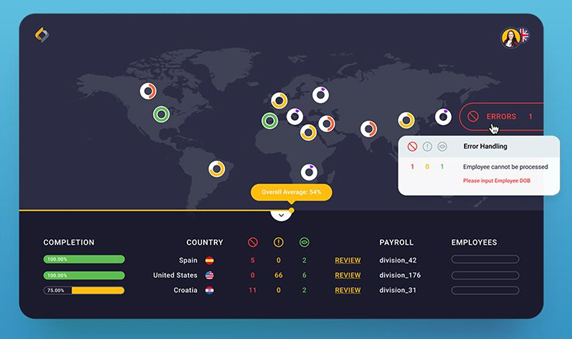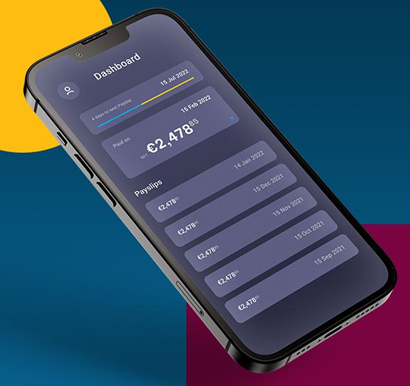Our world is becoming increasingly more connected, removing the obstacles and challenges of having a truly global workforce. Organizations are working diligently to improve the employee experience by investing heavily in various perks, creating diversity and inclusion initiatives, and doubling down on benefits.
However, payroll is still the absolute most important driver of employee satisfaction. Getting payroll wrong, even just once, has a lasting impact on employee perception. Just under 50% of the global workforce will begin searching for a new job after experiencing two mishaps with their paycheck. Magnify this statistic with the current stats on the gender pay gap where, on average, 23% of directors and 9% of associates have a gender pay gap, organizations cannot wait to get this right.
The gender pay gap is only one of the three primary inequities in employee pay. Organizations must also be vigilant to reduce ageism in all forms and take a proactive approach to racial and ethnic inequality. Human capital management (HCM) is a vital component to properly managing both the intangible and tangible needs of your company’s employees. Global payroll data that is both accurate and actionable can arm your team to make better decisions.
Integral Puzzle Piece in Promoting Diversity, Inclusion
Moving beyond manual payroll processes in favor of cloud-based, automated payroll systems boast greater accuracy and efficiency, improved compliance with tax regulations, and higher employee satisfaction. Additionally, organizations have bolstered diversity and inclusion efforts simply through consolidating and centralizing the management of international payroll.
Centralizing the management of international payroll under one unified system provides access to enhanced payroll data. This data empowers leadership to find hidden inequities in hiring, compensation, and promotions. Payroll data not only reveals new insights and informed decisions, but it can also provide a roadmap for proactively closing payroll gaps.
Implement Lasting Change to Close Growing Gender Pay Gap
According to the World Economic Forum’s Global Gender Gap Report 2021, women are paid significantly less than men in every part of the world. These numbers are staggering, from earning 62% of what men are paid in the Middle East and North Africa, which climbs to approximately 71% in Eastern Europe and Central Asia. These numbers increase beyond 75% in Western Europe and the United States.
Despite having several initiatives to close the gap, 2020 reported the gender pay gap increased from 19% to 22%. To ground these numbers, when factoring in a combined look of discrepancy in wages, lack of advancement, and diminished pension contributions, a woman can earn up to $850,000 less than a man over a 40-year career.
The three main driving forces creating the gender pay gap are the exact barriers to eliminating it:
- Limited education opportunities for women—An estimated 132 million school-age girls will not complete their education.
- Lack of presentation in decision-making roles—Globally, women make up 47% of the workforce at the first rung of the corporate ladder, and lowers to 22% of the C-suite.
- Disproportionate impact of COVID-19 on women—Accounted for 100% of job losses in the United States in December 2020.
An integral component to shifting the gender pay gap into a more favorable direction is being able to see the data (as in Figure 1). Having visibility and the ability to monitor inequities is the first step to acting. A consolidated, unified view into global payroll is the only way this becomes possible. Integrating both a global managed payroll system and your HCM suite empowers you to humanize employee data and apply the precise lens enabling actionable decisions.
Figure 1—Dashboard Showing Payroll Data

Age Is Just a Number, or Is It?
Harder to identify, and arguably more of a moving target, is ageism in the workplace. Ageism can manifest itself in several different ways depending on the organization and at different stages in an employee's career. A survey conducted by Built In, an employment network for technical professionals, found that 58% of workers claimed they noticed workplace age bias as employees entered their 50s. To build on this, employees who were on the fast track in their 30s and 40s, and who were given competitive salaries and opportunities for advancement, found this to diminish over time as they continued to age.
This problem begins to exacerbate when considering external factors. For instance, one-third of the surveyed audience in the Built In study believe that not only did age impact their career path at their current organization, but also put their job at risk. A leading Business Insurance firm, Hiscox, reported that 62% of middle managers feared not being able to find another job if they lost their current job. Working with that type of anxiety and inherent risks is detrimental to employee satisfaction. Forbes reinforced these fears, noting that job offer rates for older applicants are 68% lower than younger applicants.
With such powerful statistics highlighting the negative impacts of ageism, Built In reported that only 8% of companies focused on diversity factored ageism into the equation.
Having a unified line of sight into pay, segmented by age, location, and role offer organizations the ability to see how their workforce is distributed. As with the gender pay gap, visibility enables key decision makers to proactively identify issues long before age-related discrimination charges become a potential risk.
How Payroll Reporting Can Combat Inequality
Having global payroll data that allows you to analyze the ethnic, age, and gender composition of your workforce means you can begin to identify areas for improvement. Being able to seamlessly integrate your HCM suite with your global managed payroll solution provides a data-rich experience that truly connects your organization. Leaders will now be able to pinpoint specific locations, teams, positions, and departments where gaps are the most disparate.
Be the change you want to see in the world, and be proactive with these three powerful actions:
- Start the dialogue—Prioritizing issues in pay gaps within the organization and securing buy-in from the C-suite is a strategic imperative to weave this topic into the culture. Salesforce has been a trailblazer and advocate in equal pay, investing $8 million to adjust salaries for 30,000 employees.
- Use enhanced payroll analytics—Using a consolidated payroll solution, organizations can document global trends and identify pay gaps internally. Taking a proactive approach to enhanced pay gap reporting will ensure organizations stay in compliance with existing regulations.
- Act on the data—Identifying the issues are only one piece of the puzzle. Taking decisive action is essential to fast tracking your agenda. Making salary corrections to historically underpaid segments of your workforce for imbalances is a bold, but necessary start.
Migrating to cloud-based platforms helps ensure organizations have the “right” data and eliminates manual errors in the payroll process. This leads to automating key steps to eliminate manual effort and the associated risk of errors and integrating payroll systems with HCM software to improve data sharing and accuracy among cross-functional teams.
The benefits of integration are vast, but there are also negative implications to not having integrated data beyond the impacts to closing the pay equity gap. Without a centralized, single source of truth and integrated data, organizations face the following:
- Lost time and error prone delivery from manual entry and processes
- Risk of data inaccuracy and missing data from disparate sources
- Inefficiency of reporting with the need to compile several reports to visualize global workforce
- Inability to focus effort on making strategic decisions versus tactical exercises
Financial wellness and employee satisfaction are achievable once companies can support employees in fully understanding their paychecks and highlight the following:
- A thorough rundown of all deductions
- A full explanation of services that might be covered or partially paid by an employer each month (e.g., healthcare benefits)
- A running account of pension/retirement contributions
Few payroll solutions can offer this kind of accessibility, but even less can boast a mobile application, like seen in Figure 2, to give their employees full autonomy over their compensation. The winning formula is ensuring your employees have full ownership of their personal information and banking details while delivering all pay-related data directly to their mobile device. This showcases the employer’s commitment to transparency and innovation.
Figure 2—Immedis’ Mobile Application

Robust Analytics Enables Proactive Decision Making, Reduces Risk
HR managers need to have access to several types of reports to make better decisions when it comes to employee pay. Onboarding a leading HCM suite only becomes truly effective when paired with a global payroll solution that unifies employee data with global insights. HR managers need to have foundational reports to be effective that include the following:
- Setup Reports—Great compliance trackers to ensure all required data is present
- Variance Reports—Highlight month over month changes to preemptively isolate and prevent errors
- Diversity and Inclusion Reports—Identify pay variances across gender, ethnicity, race, and age gaps within your organization
- Flash Reports—Showcase key trends in your international payroll data to reduce analysis efforts from hours to minutes
- Movements Dashboard—Arms your team with how headcounts have changed across regions and countries as international employees and remote employees move through multiple countries
- Service Management Reports—Openly assess a payroll provider’s performance
The collection of these reports become possible with payroll and HCM integration, whilst empowering leaders to understand the objective and subjective sides of their team.
How Global Payroll Data, HCM Provide Insights for Better Decision Making
There is a fundamental need for a payroll provider to offer analytics that allow for essential reports. Mitigating global payroll risks is vital for both the objective and subjective sides of HCM as well as moving your organization toward a more equitable solution. One slip up in paying the wrong amount, or at the wrong time, creates a lasting negative impact to employees.
To further understand how to achieve pay equity through global payroll, navigate this link to view more context and statistics. To explore a fully integrated payroll solution, visit immedis.com.